Kaiquan Wu
Low-Complexity Soft Decision Detection for Combating DFE Burst Errors in IM/DD Links
Jun 13, 2023Abstract:The deployment of non-binary pulse amplitude modulation (PAM) and soft decision (SD)-forward error correction (FEC) in future intensity-modulation (IM)/direct-detection (DD) links is inevitable. However, high-speed IM/DD links suffer from inter-symbol interference (ISI) due to bandwidth-limited hardware. Traditional approaches to mitigate the effects of ISI are filters and trellis-based algorithms targeting symbol-wise maximum a posteriori (MAP) detection. The former approach includes decision-feedback equalizer (DFE), and the latter includes Max-Log-MAP (MLM) and soft-output Viterbi algorithm (SOVA). Although DFE is easy to implement, it introduces error propagation. Such burst errors distort the log-likelihood ratios (LLRs) required by SD-FEC, causing performance degradation. On the other hand, MLM and SOVA provide near-optimum performance, but their complexity is very high for high-order PAM. In this paper, we consider a one-tap partial response channel model, which is relevant for high-speed IM/DD links. We propose to combine DFE with either MLM or SOVA in a low-complexity architecture. The key idea is to allow MLM or SOVA to detect only 3 typical DFE symbol errors, and use the detected error information to generate LLRs in a modified demapper. The proposed structure enables a tradeoff between complexity and performance: (i) the complexity of MLM or SOVA is reduced and (ii) the decoding penalty due to error propagation is mitigated. Compared to SOVA detection, the proposed scheme can achieve a significant complexity reduction of up to 94% for PAM-$8$ transmission. Simulation and experimental results show that the resulting SNR loss is roughly 0.3 to 0.4 dB for PAM-4, and becomes marginal 0.18 dB for PAM-8.
Temporal Properties of Enumerative Shaping: Autocorrelation and Energy Dispersion Index
Jul 08, 2022
Abstract:We study the effective SNR behavior of various enumerative amplitude shaping algorithms. We show that their relative behavior can be explained via the temporal autocorrelation function or via the energy dispersion index.
Reducing the Error Floor of the Sign-Preserving Min-Sum LDPC Decoder via Message Weighting of Low-Degree Variable Nodes
Jun 23, 2022

Abstract:Some low-complexity LDPC decoders suffer from error floors. We apply iteration-dependent weights to the degree-3 variable nodes to solve this problem. When the 802.3ca EPON LDPC code is considered, an error floor decrease of more than 3 orders of magnitude is achieved.
List-encoding CCDM: A Nonlinearity-tolerant Shaper Aided by Energy Dispersion Index
Sep 13, 2021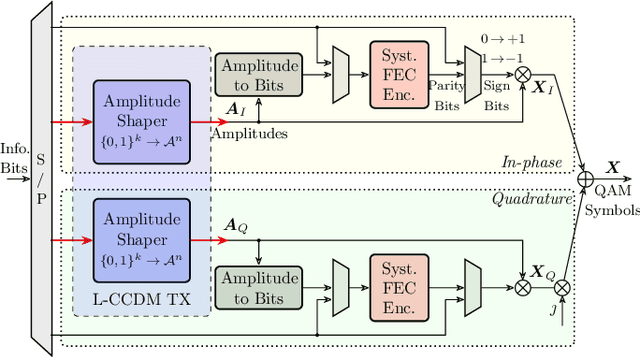


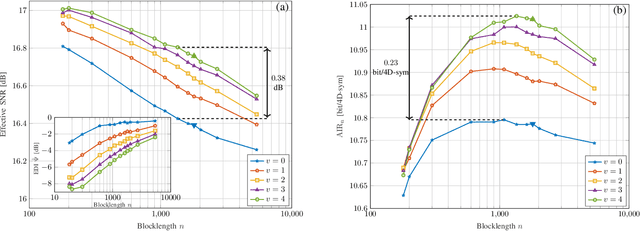
Abstract:Recently, a metric called energy dispersion index (EDI) was proposed to indicate the nonlinear interference (NLI) induced by correlated symbols during optical transmission. In this paper, we propose a new shaper architecture to decrease the EDI of transmitted symbols and thus, increase the signal-to-noise ratio (SNR). We call this shaper the list-encoding constant-composition distribution matcher (L-CCDM). L-CCDM consists of an additional EDI selecting module, which is compatible with standard probabilistic amplitude shaping (PAS) architecture. Numerical results obtained from a multi-span multi-channel system show that when compared to standard CCDM with 256-ary quadrature amplitude modulation (256QAM), the proposed architecture offers an effective SNR gain of 0.35 dB, an achievable information rate gain of 0.22 bit/4D-symbol, or equivalently an 8% reach extension.
Exponentially-Weighted Energy Dispersion Index for the Nonlinear Interference Analysis of Finite-Blocklength Shaping
Jun 08, 2021

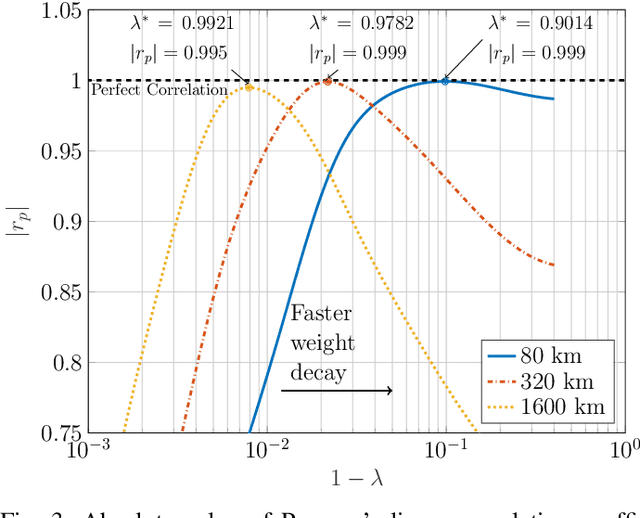
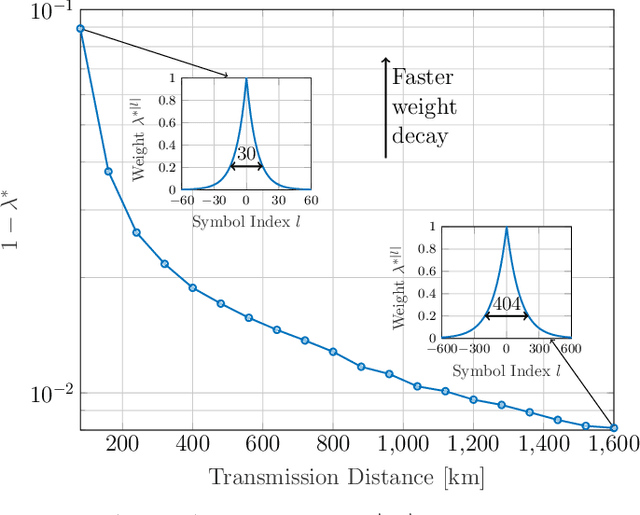
Abstract:A metric called exponentially-weighted energy dispersion index (EEDI) is proposed to explain the blocklength-dependent effective signal-to-noise ratio (SNR) in probabilistically shaped fiber-optic systems. EEDI is better than energy dispersion index (EDI) at capturing the dependency of the effective SNR on the blocklength for long-distance transmission.
Temporal Energy Analysis of Symbol Sequences for Fiber Nonlinear Interference Modelling via Energy Dispersion Index
Feb 24, 2021
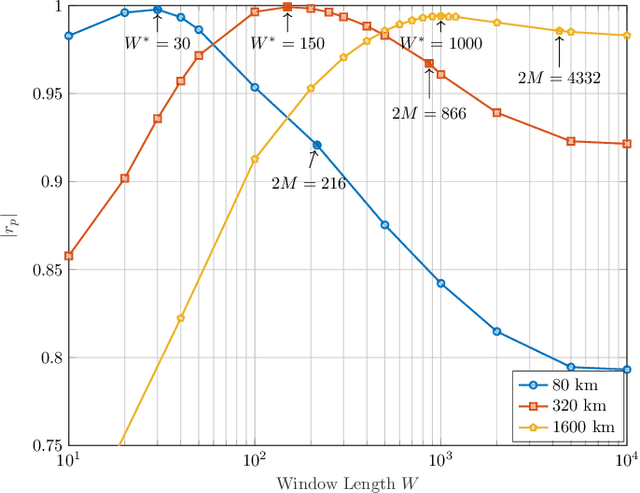

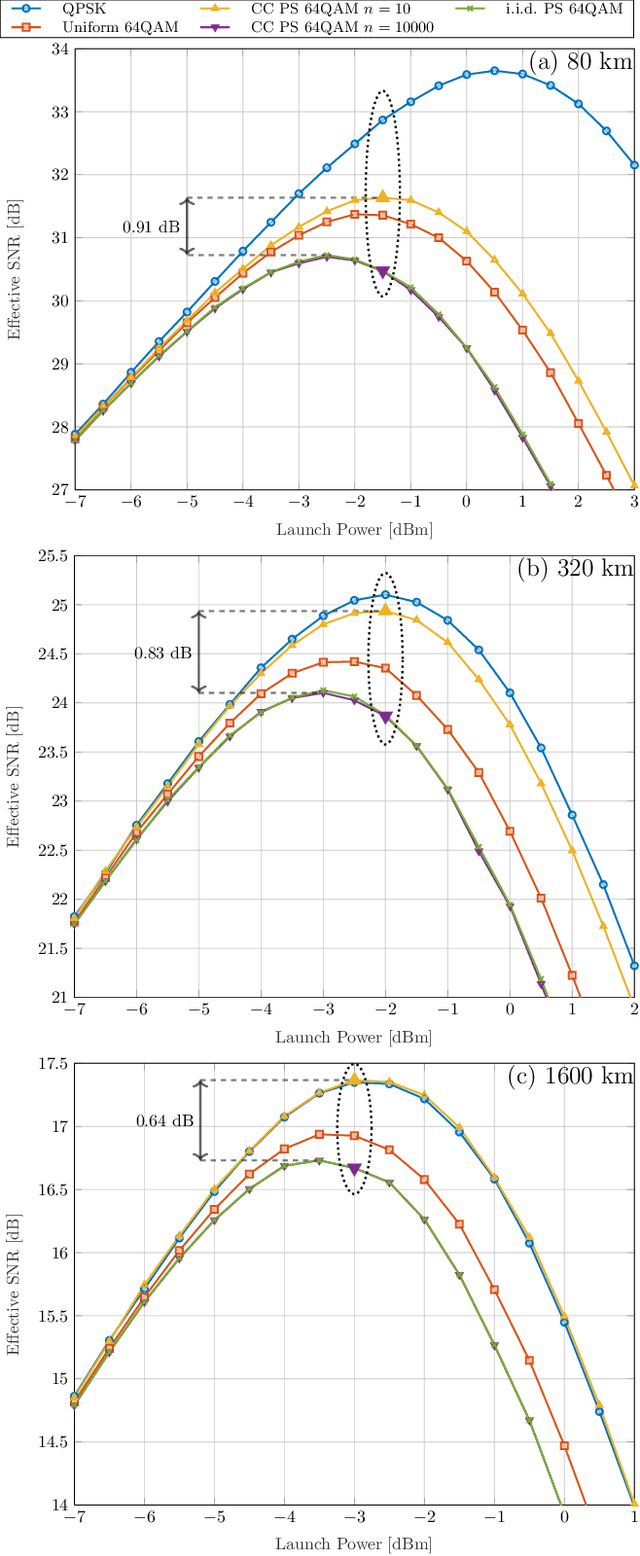
Abstract:The stationary statistical properties of independent, identically distributed (i.i.d.) input symbols provide insights on the induced nonlinear interference (NLI) during fiber transmission. For example, kurtosis is known to predict the modulation format-dependent NLI. These statistical properties can be used in the design of probabilistic amplitude shaping (PAS), which is a popular scheme that relies on an amplitude shaper for increasing spectral efficiencies of fiber-optic systems. One property of certain shapers used in PAS -- including constant-composition distribution matchers -- that is often overlooked is that a time-dependency between amplitudes is introduced. This dependency results in symbols that are non-i.i.d., which have time-varying statistical properties. Somewhat surprisingly, the effective signal-to-noise ratio (SNR) in PAS has been shown to increase when the shaping blocklength decreases. This blocklength dependency of SNR has been attributed to time-varying statistical properties of the symbol sequences, in particular, to variation of the symbol energies. In this paper, we investigate the temporal energy behavior of symbol sequences, and introduce a new metric called energy dispersion index (EDI). EDI captures the time-varying statistical properties of symbol energies. Numerical results show strong correlations between EDI and effective SNR, with absolute correlation coefficients above 99% for different transmission distances.
 Add to Chrome
Add to Chrome Add to Firefox
Add to Firefox Add to Edge
Add to Edge